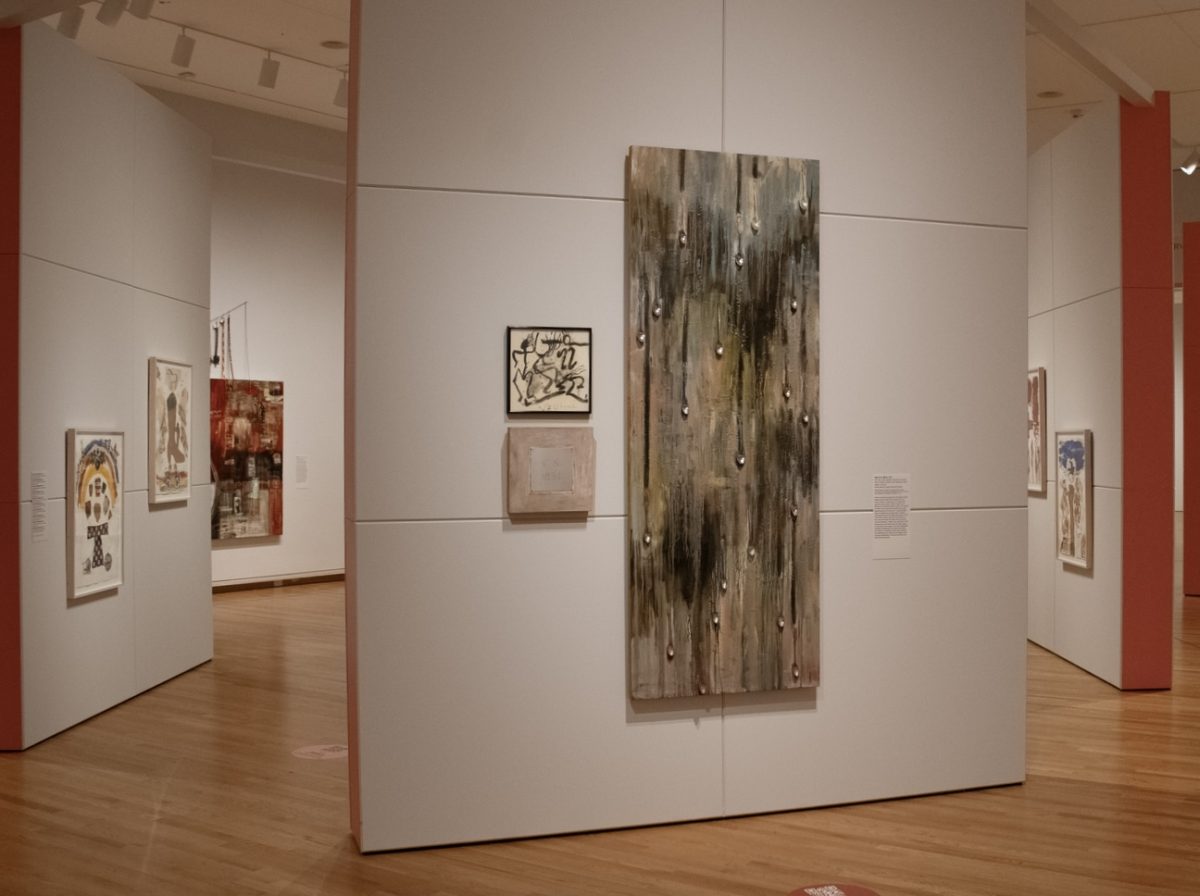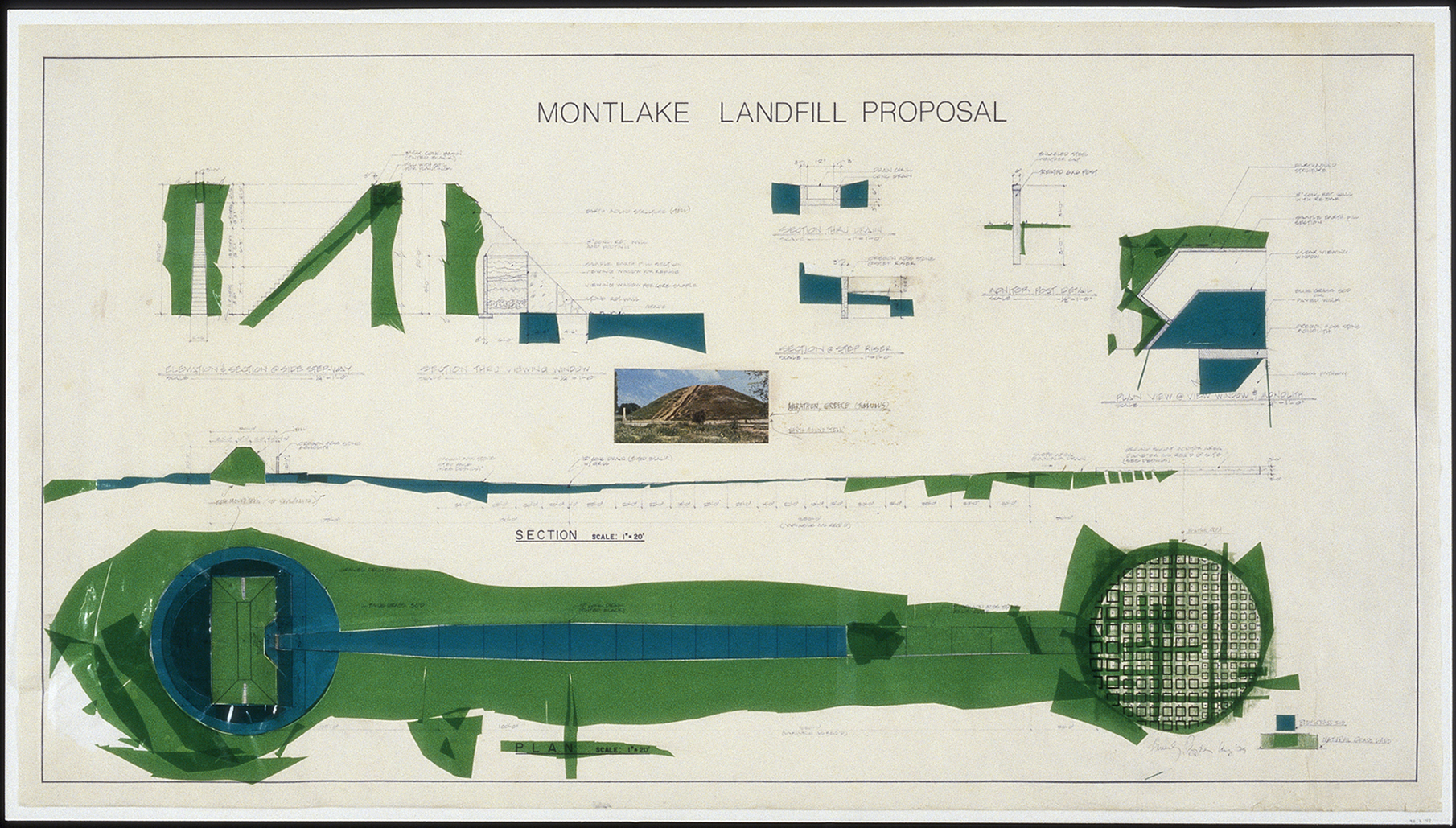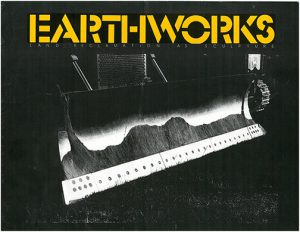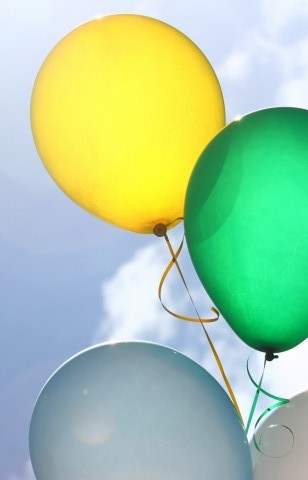Memory Map Smartphone Tour: Rain (C.S. 1854)
In Rain (C.S. 1854) (1990), long-handled silver spoons are adhered to a wood canvas. Below the spoons, oozing layers of paint, oil, wax, and ink punctuate the work’s surface like drops of rain.
Contemporary Native artist Jaune Quick-to-See Smith was inspired to create Rain (C.S. 1854) in 1990 while traveling through the northeast United States with Seneca artist G. Peter Jemison. She recalls, “When I went up to Buffalo and Syracuse [New York], the Iroquois up there were saying the maple trees were dying because of acid rain.” The incorporation of silver spoons in the work, says Smith, represents “the mouths” of the steel mill companies most responsible for the acid rain. Taken as a whole, the installation calls out the unequal distribution of both environmental harm and financial benefit as well as the sense of capitalist entitlement that allows factories to burn fossil fuels so recklessly.
Rain (C.S. 1854) is one of many environmentally-focused works Smith has created throughout her five-decade career. Tune in to the free smartphone tour of Jaune Quick-to-See Smith: Memory Map at SAM to hear G. Peter Jemison discuss the significance of this work, its connection to Chief Seattle, and Smith’s passion for environmentalism. The exhibition closes in just over a month on Sunday, May 12—reserve your tickets to see it at SAM before it’s gone!
Rain (C.S. 1854), 1990
NARRATOR: Smith called this work Rain (C.S. 1854). G. Peter Jemison is a member of the Seneca Nation heron clan.
G. PETER JEMISON: As you move around the painting, you would be struck by this light being reflected from the spoons. And I like that idea, because it’s difficult to capture, really, what rain looks like If you try to paint it.
NARRATOR: The “C.S.” of the painting’s subtitle stands for Chief Seattle, who was a Suquamish and Duwamish chief during the middle of the 19th century.
G. PETER JEMISON: Chief Seattle, of course, is famous for making an early statement about the necessity to live in harmony with the natural world, and not to be in the process of destroying it. Perhaps Jaune’s commentary here is related to what is it, that is, now not only in the soil, but what is coming from the atmosphere. Because of the kind of air pollution that we now live with.
NARRATOR: Smith made this painting after traveling around the northeastern United States with Jemison, and encountering the effects of acid rain on forests in upstate New York.
– Lily Hansen, SAM Marketing Content Creator
Photo: Chloe Collyer.




